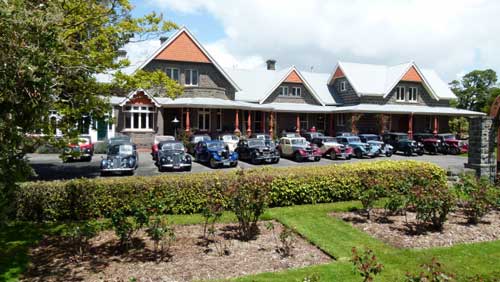
Purrumbete Homestead. Photo by Leigh Johnson
Peter, John and Thomas Manifold, brothers, arrived in Australia from England in 1831
and settled in Tasmania. Five years later when an opportunity arose in the Port
Phillip region for them to gain a holding there, they moved to the region bringing
their sheep with them to Point Henry and travelled overland to Stony Rises on the
banks of Lake Purrumbete arriving in 1839.
They took up 100,000 acres here and established Purrumbete Homestead, on 100,000 acres
near Camperdown, one of the largest sheep stations in the western districts.
.
The station and homestead provide a tangible link to the family
and consists of a large house beside Lake
Purrumbete, exotic gardens, numerous outbuildings with an unusual water
reticulation infrastructure.
From a simple hut, they built a
Victorian styled house in 1842 and 1857-60, which was later substantially extended to designs
by architect Alexander Hamilton in 1882. In 1901, further major alterations and additions
transformed it into an eclectic Federation Arts and Crafts residence. The design for these
alterations were carried out by Guyon Purchas, who provided most unusual timber Art Nouveau
interiors. Art Nouveau paintings by Walter Withers were a significant part of the design.
It developed into a substantial farming complex during the latter half of the 19th century.
Many outbuildings were built in a Victorian Picturesque style (including the extant House Stables &
Coach House, Carpenterĺ─˘s [Blacksmithĺ─˘s] Shop, Managerĺ─˘s House, Menĺ─˘s Quarters, Menĺ─˘s Stables and Cart
and Cow Shed) to accommodate the growing demands of the cattle, sheep and later bullock and dairy
station (as well as butter factory). Successive generations of Manifolds worked and owned Purrumbete
until 1983.
Abridged from Authentic Heritage Sewrvices Pty Ltd
 |
© Copyright Wilkins Tourist Maps Pty Ltd | |